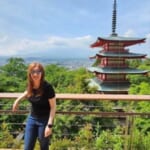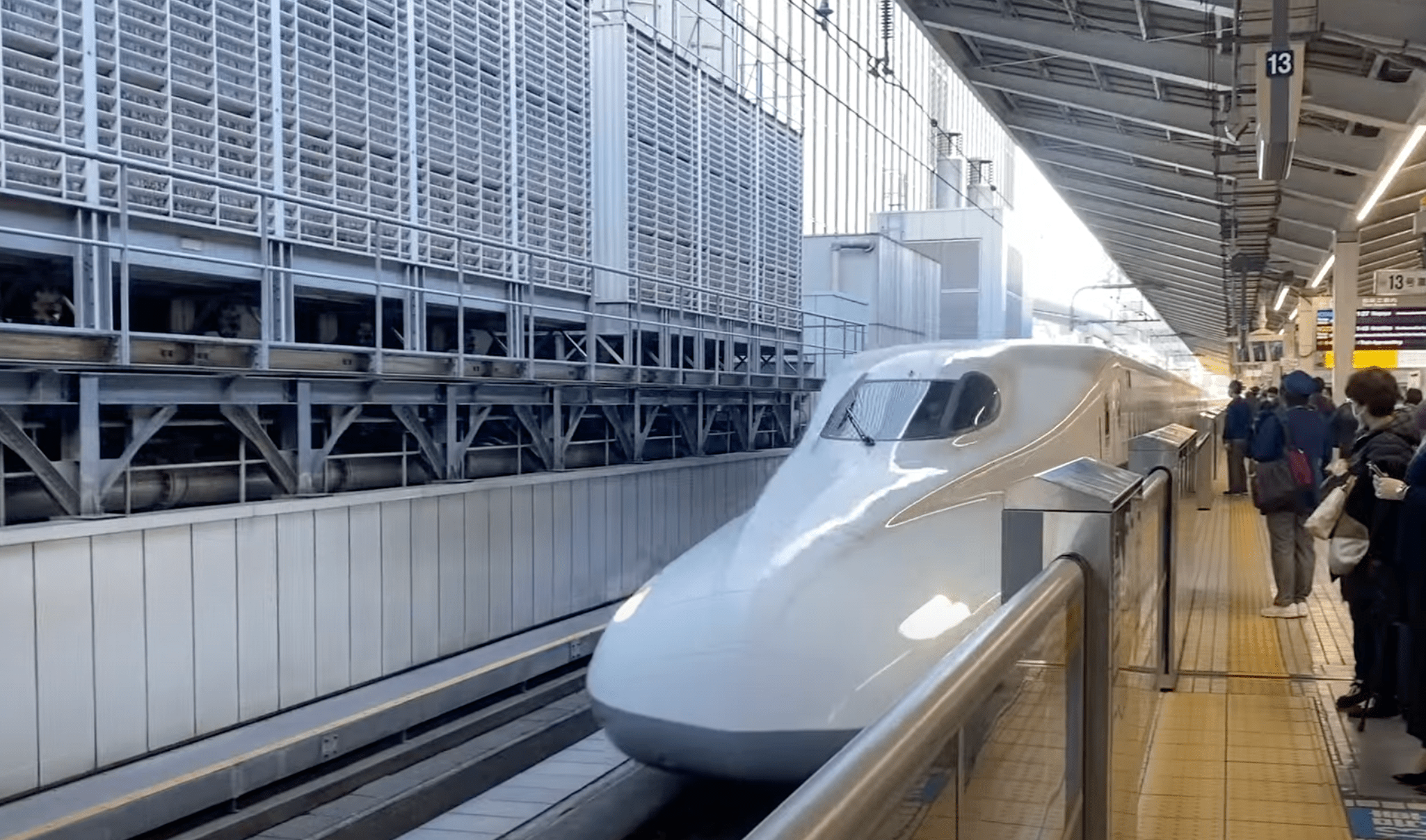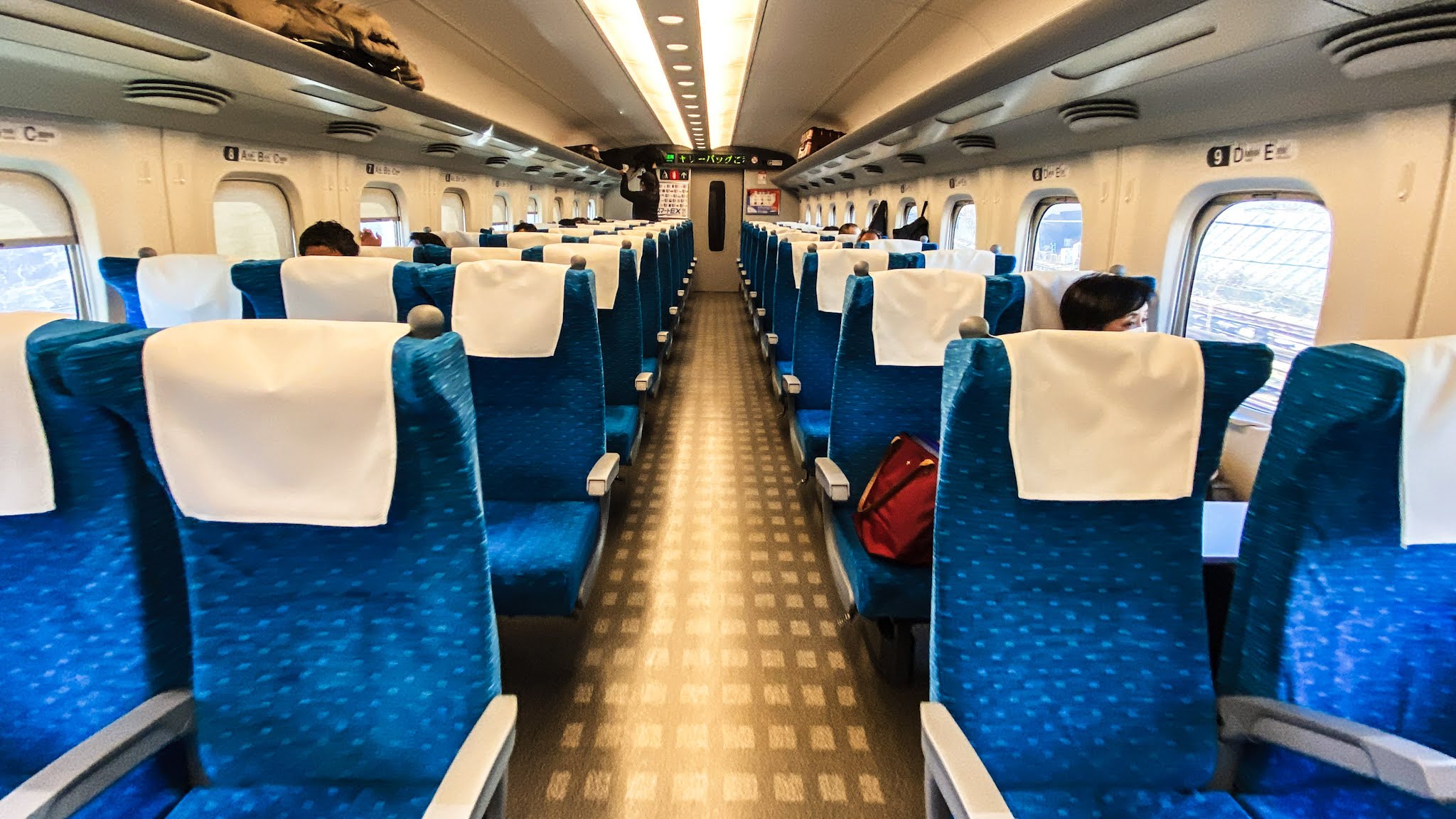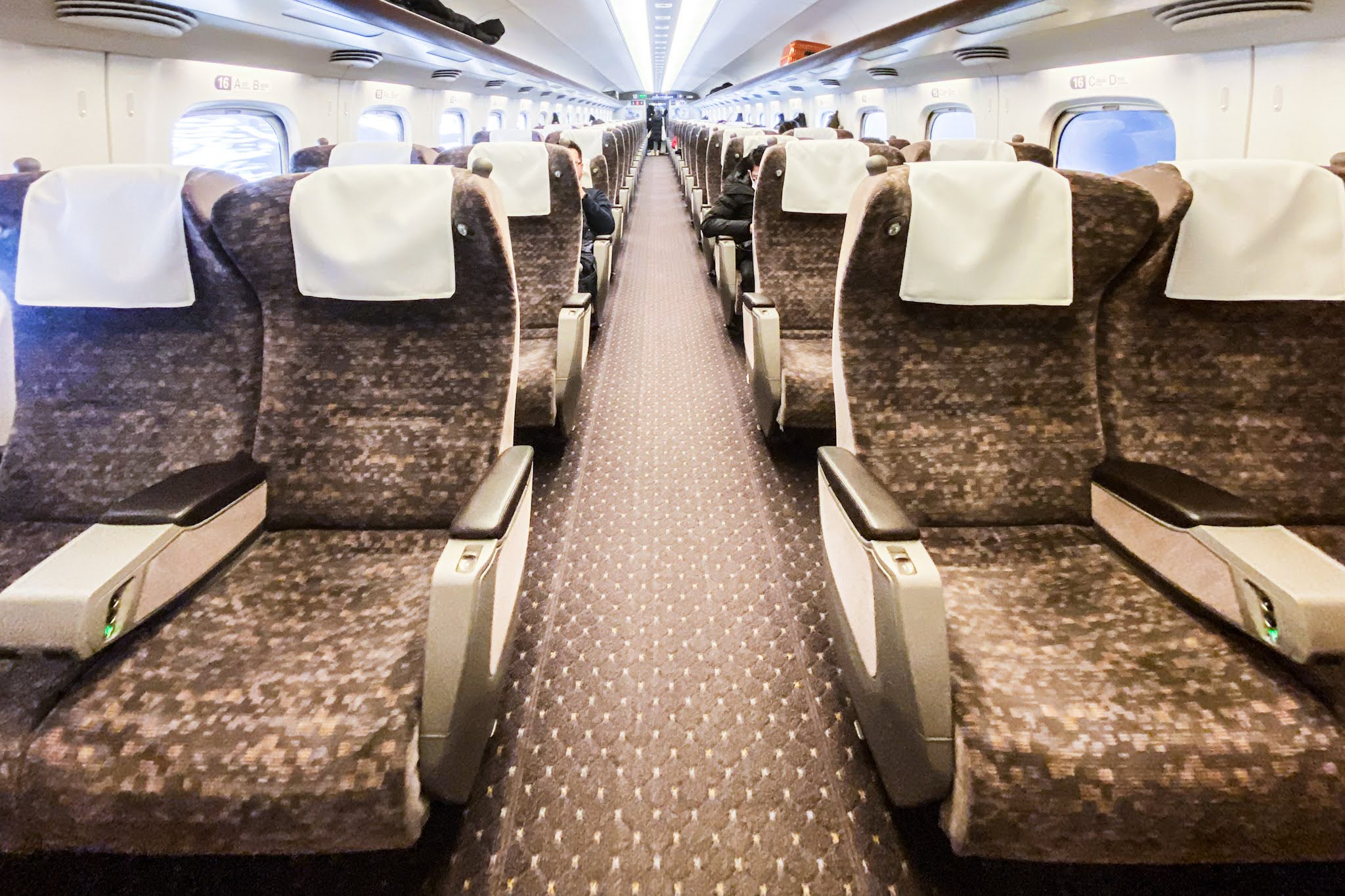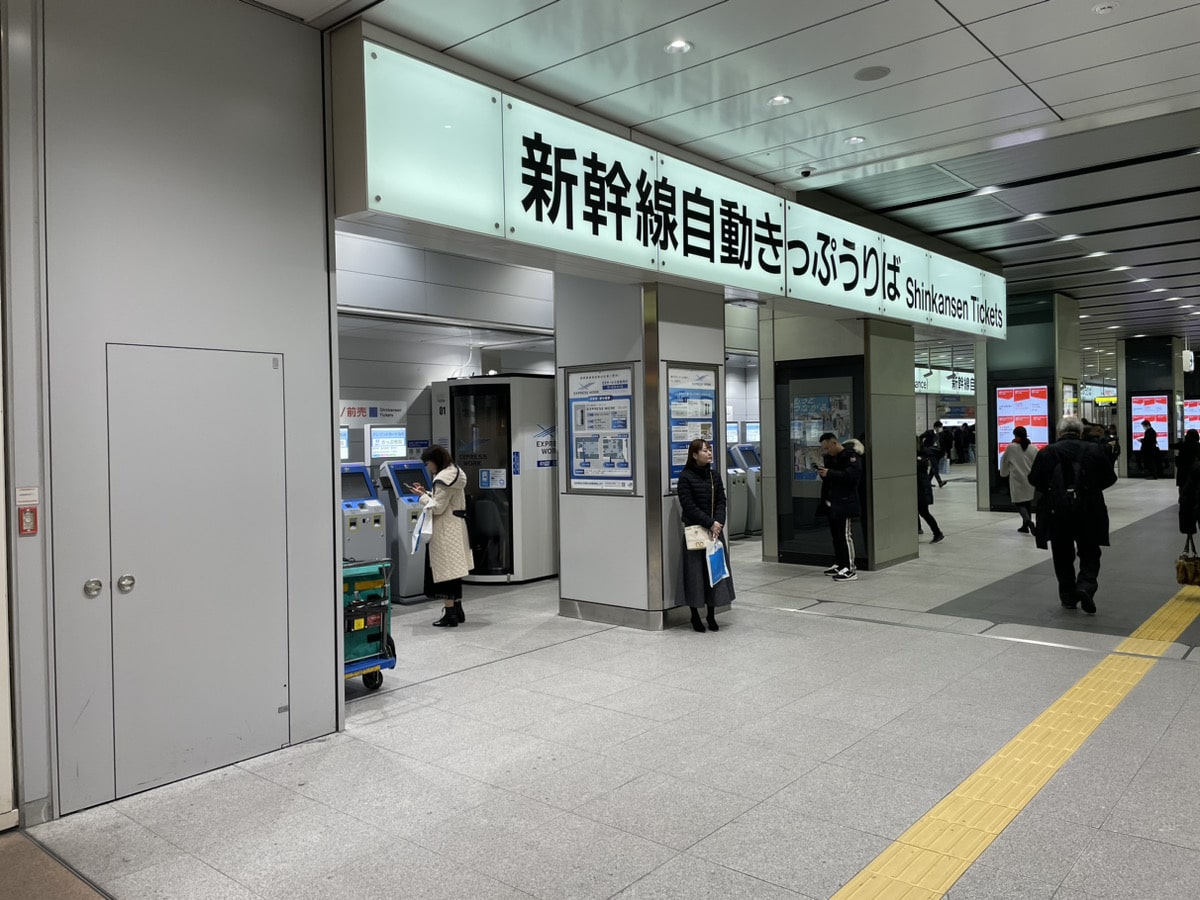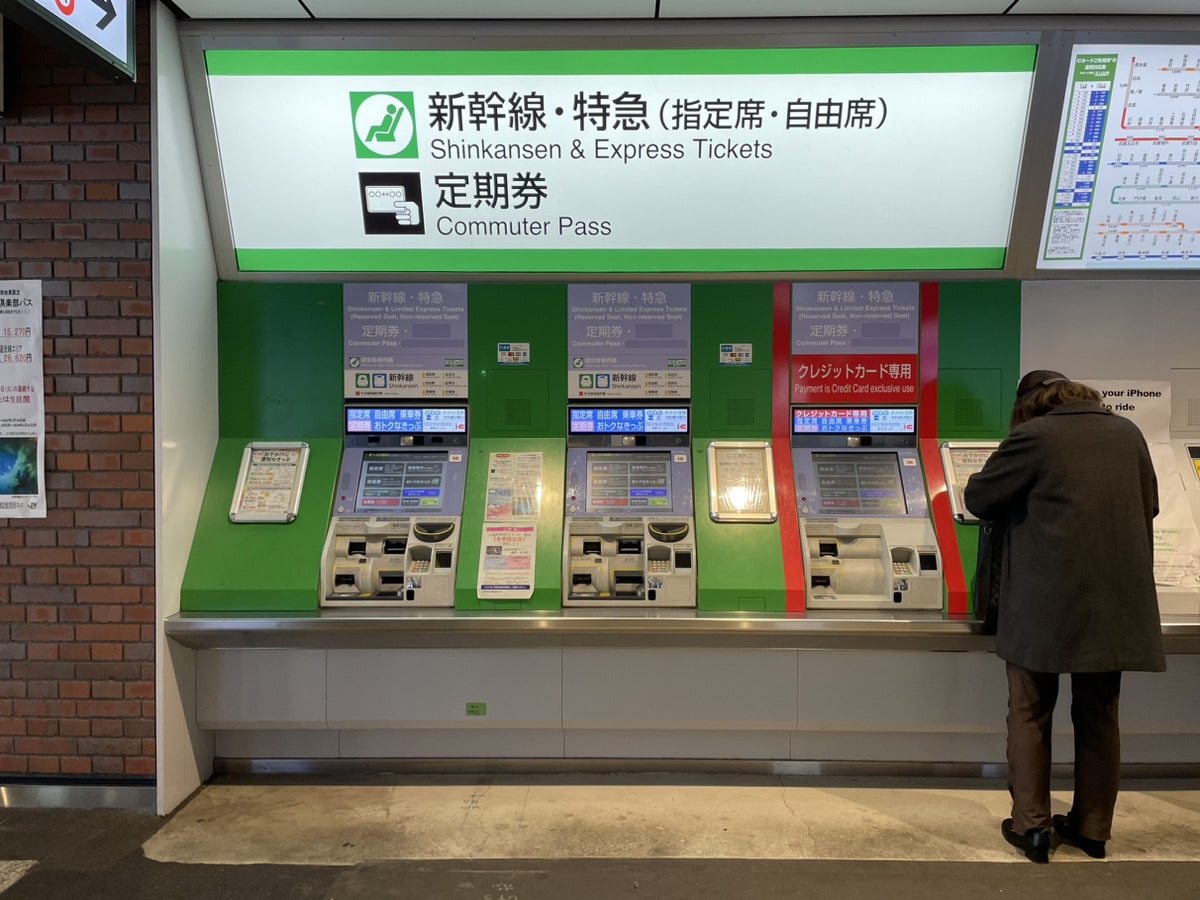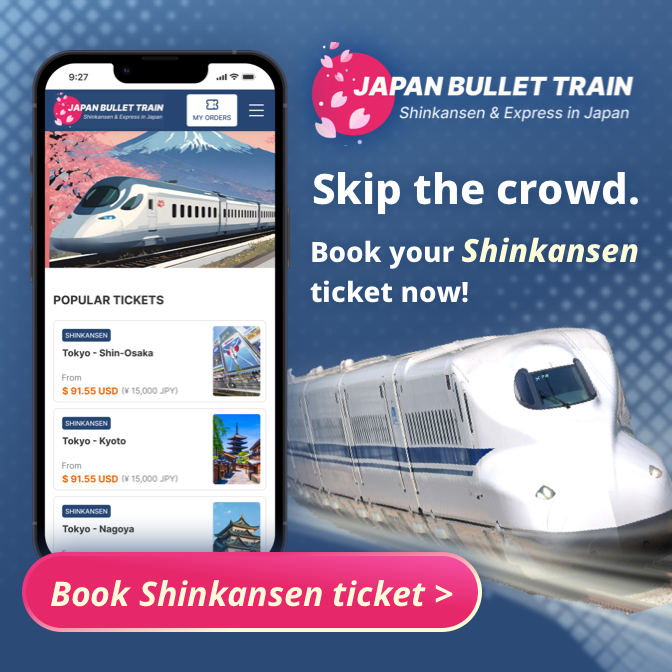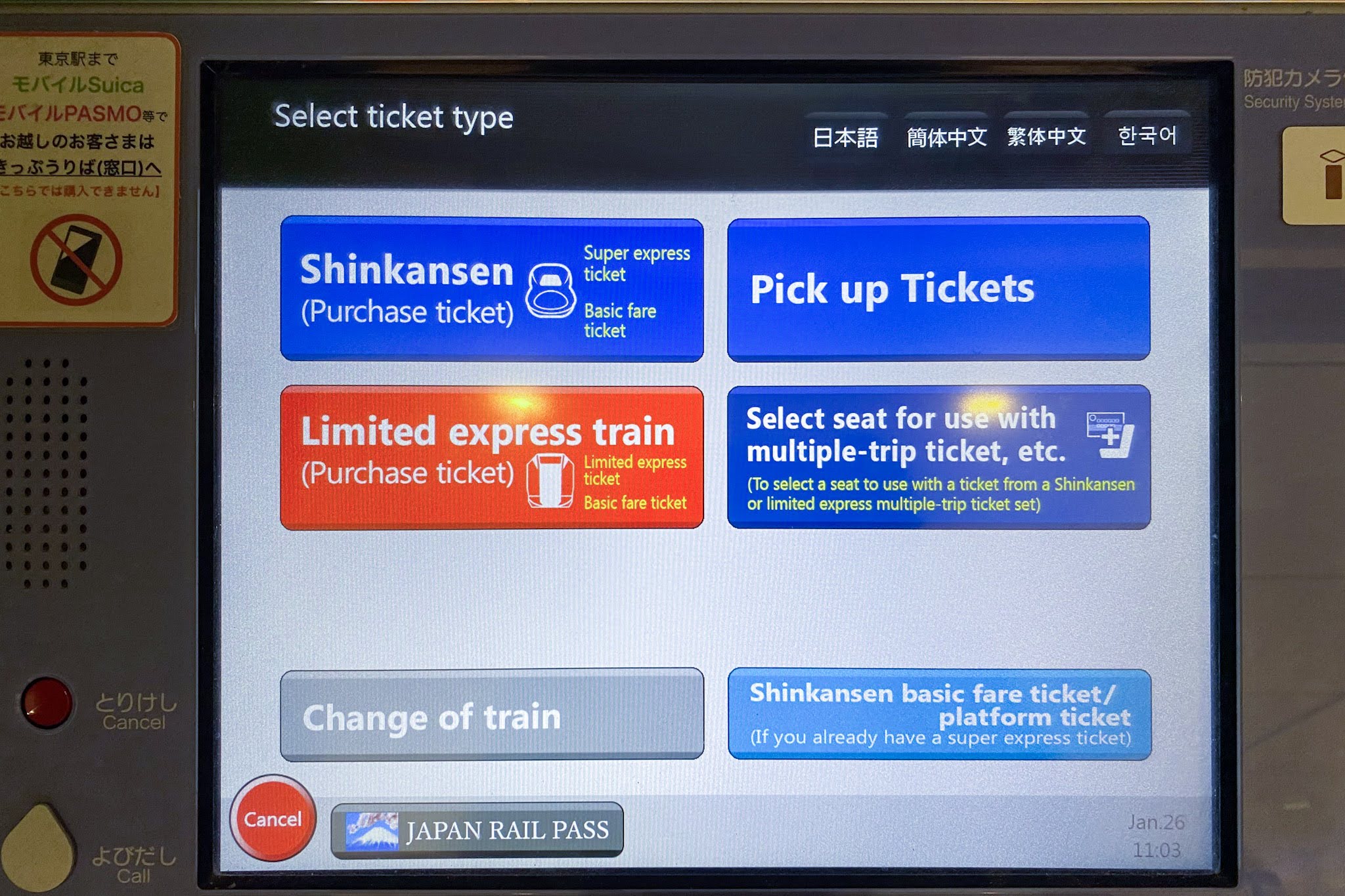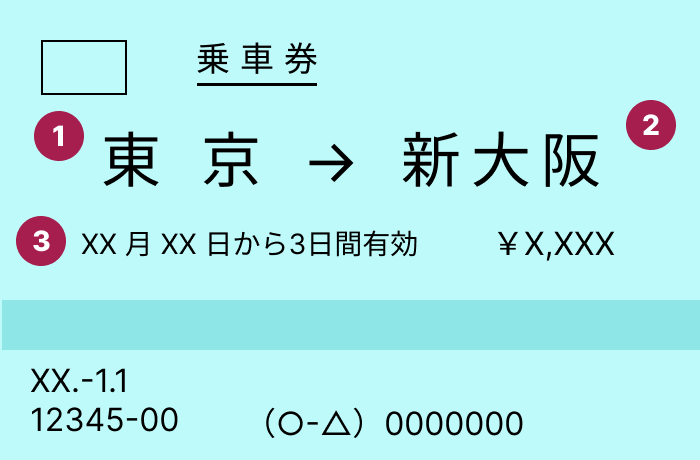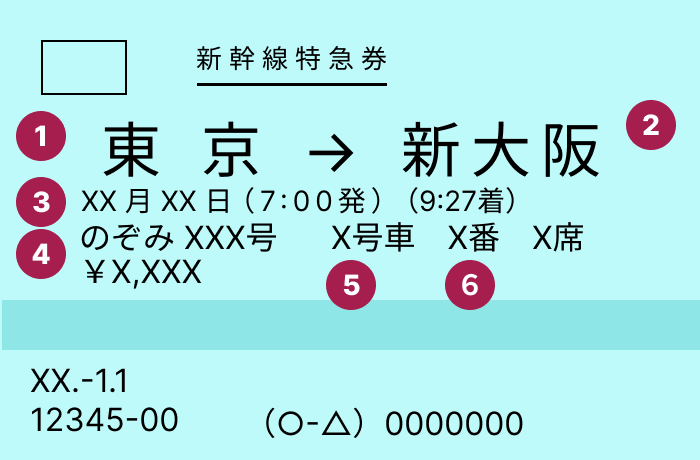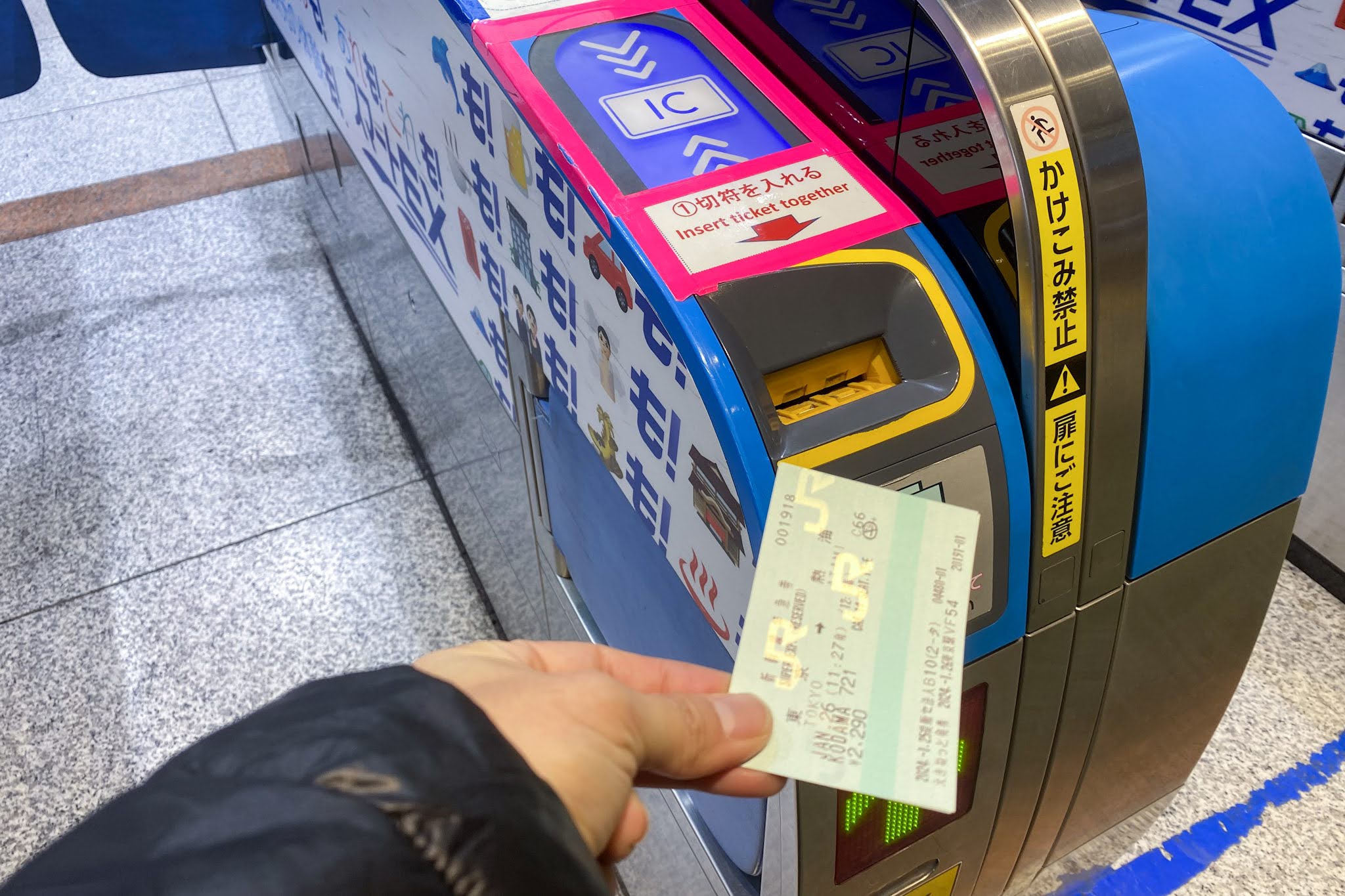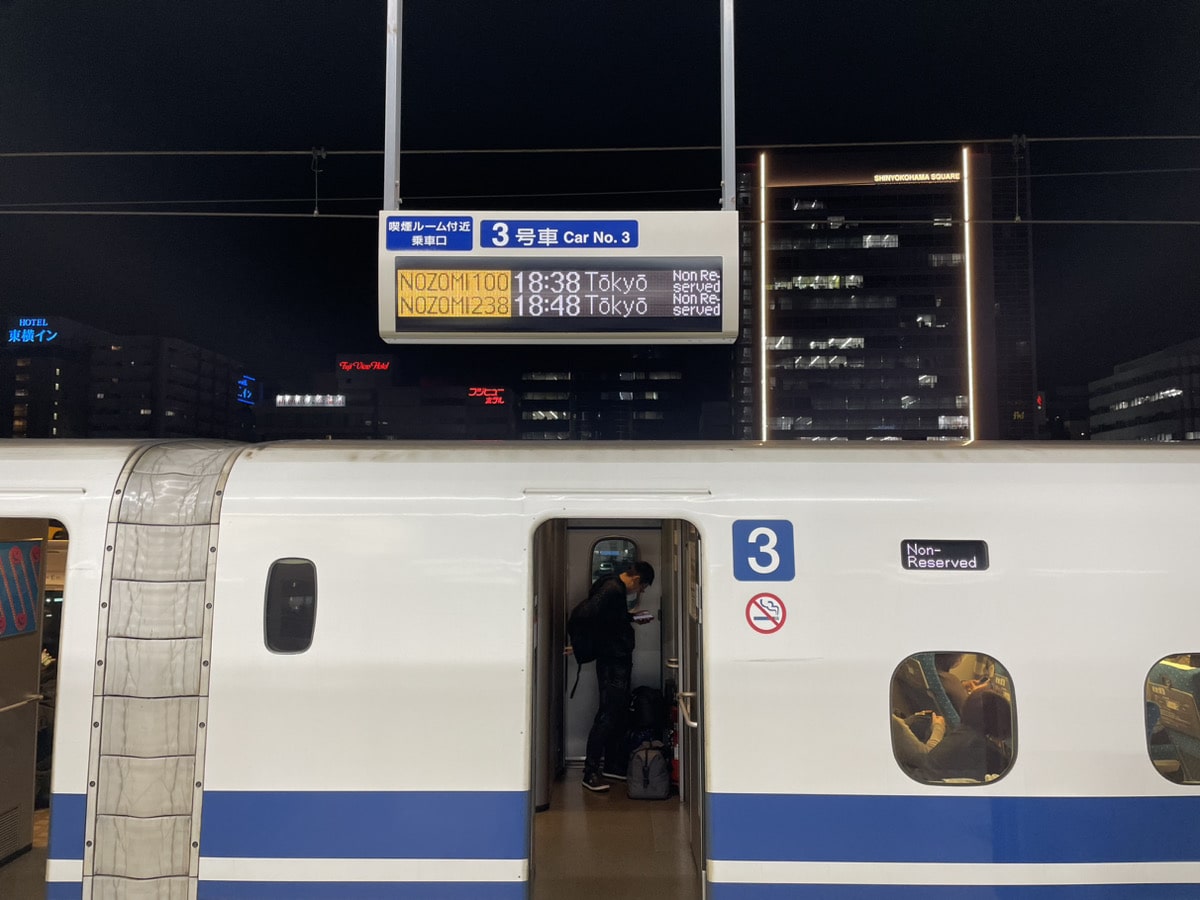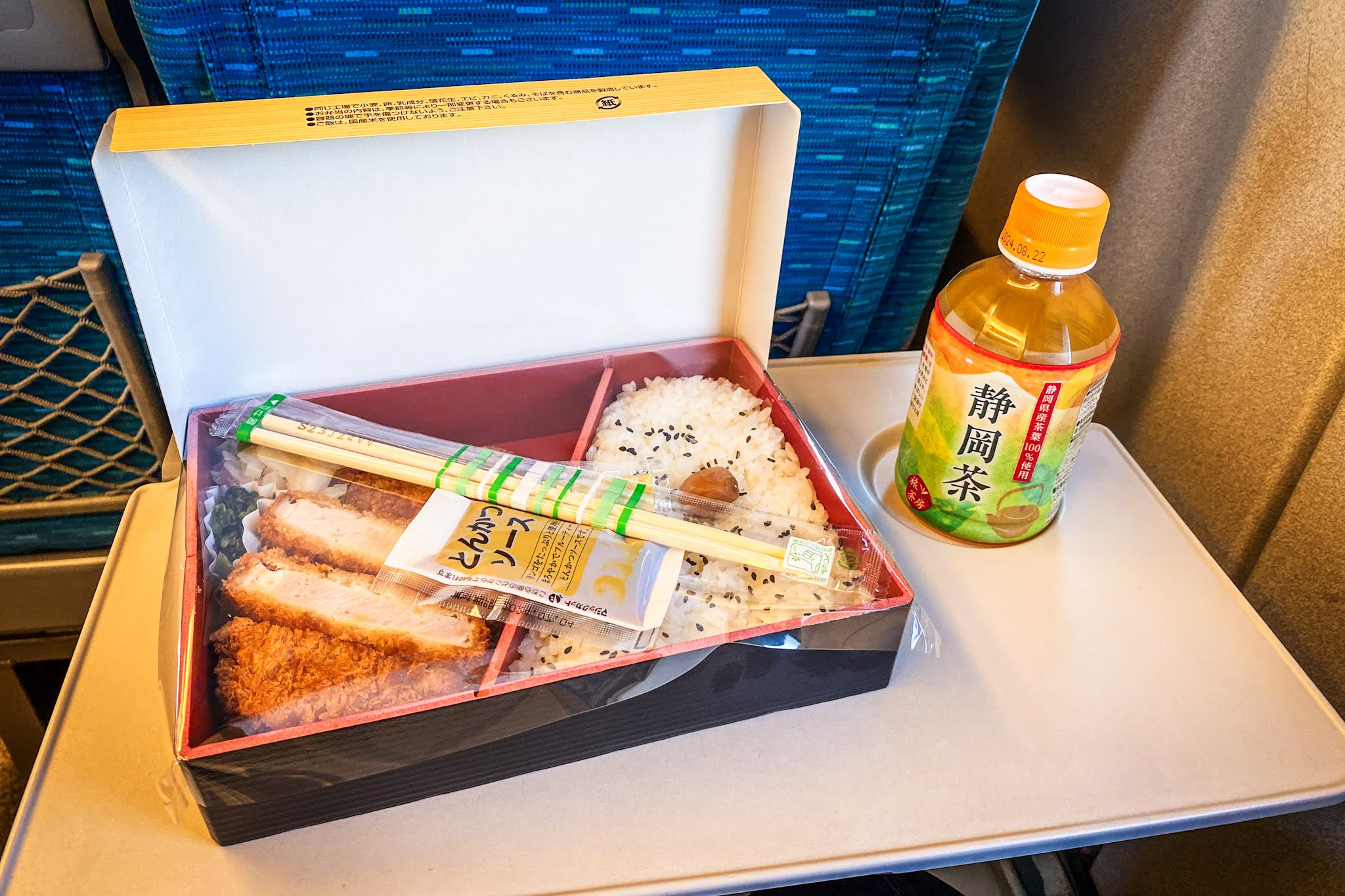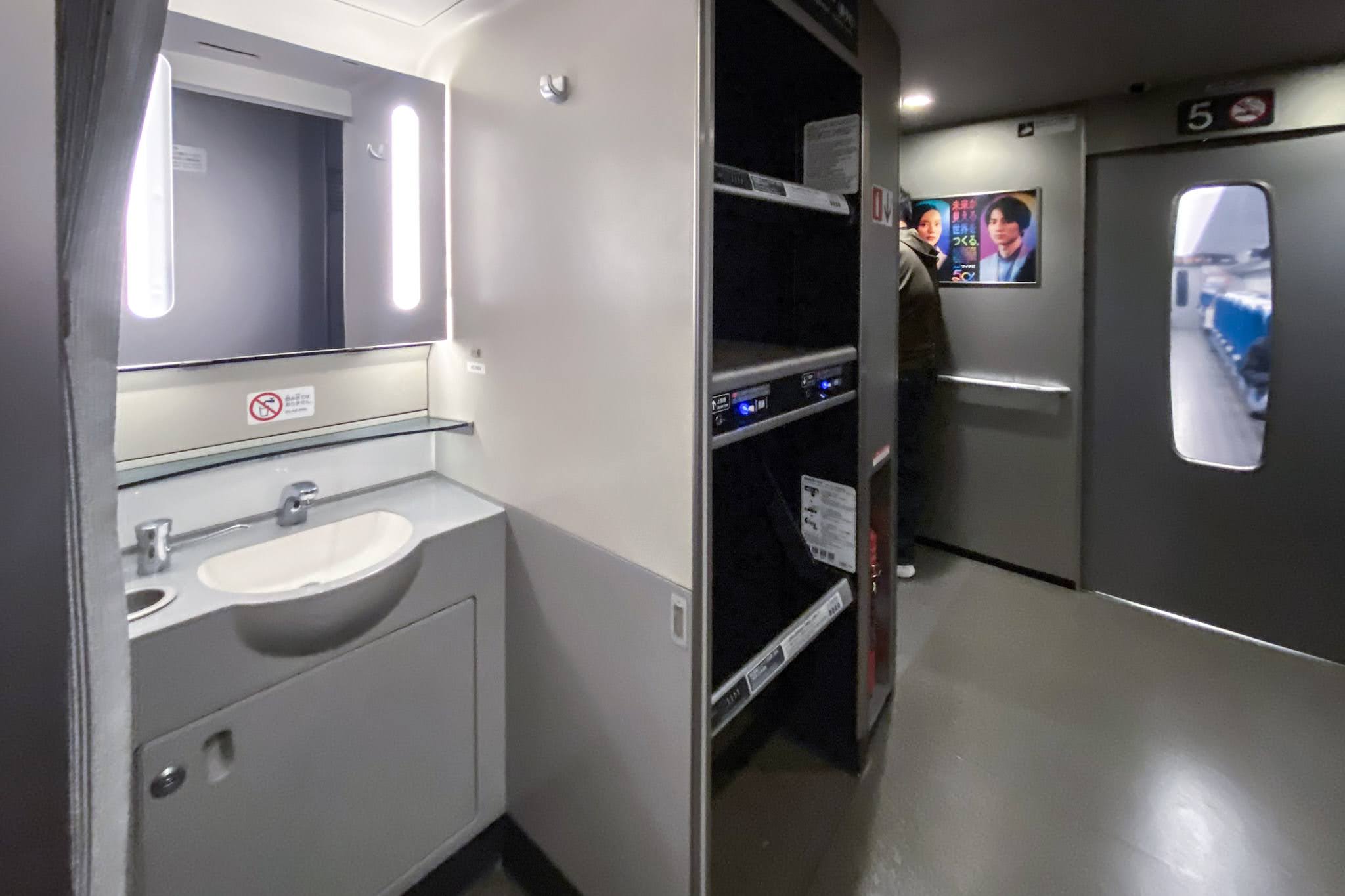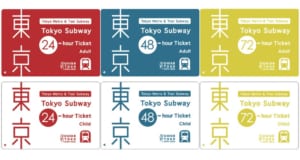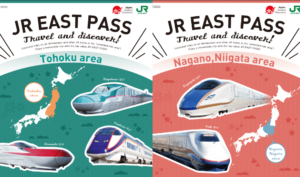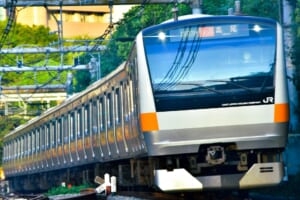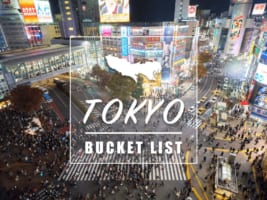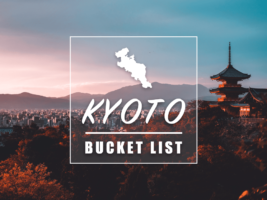Shinkansen: A Complete Guide to the Japanese Bullet Train
All you need to know about the Shinkansen, including how to book a ticket and more.

The Shinkansen or Japanese bullet train was the world’s first high-speed train, with its first service launched on October 1, 1964, linking Tokyo to Osaka. Today other countries have surpassed Japan in speed, but it is still among the top 5 fastest in the world.
Operated by Japan Railways, Japan’s largest railroad company, and from that first line, it now has nine Shinkansen lines covering practically the entire country from North to South. Today the Shinkansen has become without a doubt the best way to travel around Japan. Especially the bullet train from Tokyo to Osaka and the bullet train from Tokyo to Kyoto are the most frequent.
Types of Shinkansen
Although we call them all Shinkansen, there are different types of bullet trains, depending on whether they have more or less speed and how many stations they stop at. The best known are the Nozomi and the Mizuho, as they are the fastest, and then the Hikari, Kodama, and Sakura.
Shinkansen Cars and Seat Classes
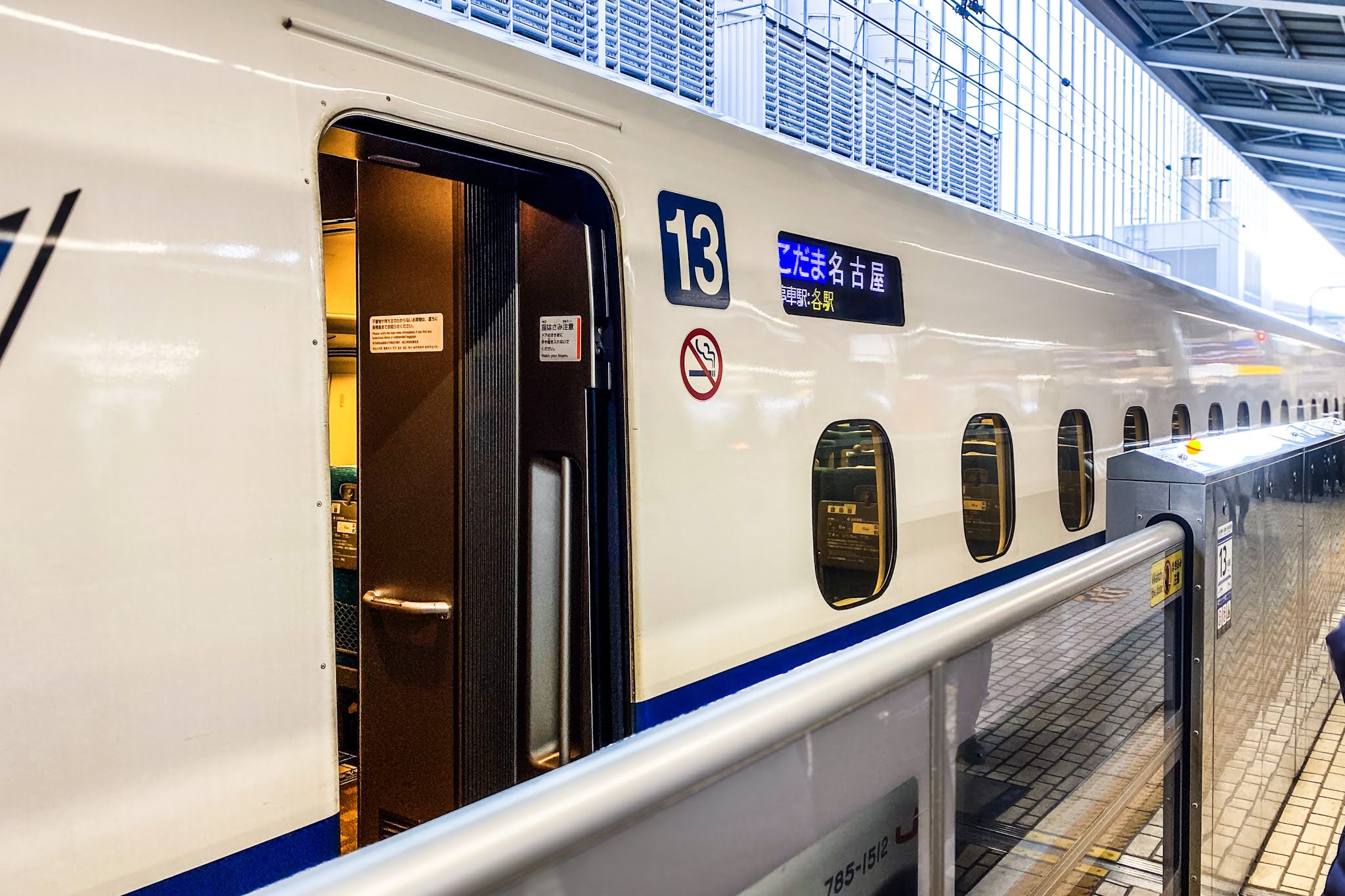
There are mainly two types of cars, those with reserved seats and those with non-reserved seats. Most bullet trains in Japan (though not all), have about 5 cars as non-reserved. The explanation for this is that there is an extra charge for reserved seats. If you don’t want to pay the extra supplement, you can access the non-reserved cars. Also, if you don’t know exactly what time you will catch the train, you can buy a ticket without a reserved seat and jump on the first train of the category you paid for in the non-reserved cars.
Users of special passes such as the Japan Rail Pass can reserve seats at no extra charge, as it’s included in the pass.
Please note that if you are traveling to Japan during the high season for domestic tourism, such as Golden Week, Obon, or New Year’s Eve, some lines temporarily switch to reserved cars only.
Seat Classes
Most parts of bullet trains in Japan have only two types of seat classes, ordinary or green class, but in a few types, there is a third category called gran class.
Ordinary Car: they have so-called regular seats. However, on Japan’s bullet trains even the regular seats are spacious and comfortable.
Green Class: special cars with larger and more luxurious seats. Green car cars are all reserved seating.
Gran Class: only a few trains have this option, but is even more luxurious and comfortable than Green Class.
How to Book Shinkansen Tickets
Official JR ticket offices
Shinkansen tickets can be purchased at official JR ticket offices, called Midori no Madoguchi in Japanese or simply Ticket Office in English, at ticket machines, or online. Ticket Offices are located in all major JR stations, and in some cases, there is more than one office if the station is very large. It’s the most direct way to buy them, but be aware that except in some tourist spots such as the airport, the staff usually do not speak English even if they know some basic words related to the job. It’s also quite time-consuming (especially at times when there can be a long queue of people waiting).
Book Your Shinkansen Ticket Online via Japan Bullet Train
Japan Bullet Train is a new service launched by our partner company, which offers bullet train and express train tickets in Japan for tourists. All the service is in English (and 3 other languages), including customer service. They accept payments with all major credit cards, and the process is very easy and simple, especially compared to Japanese websites.
After your purchase, once your ticket is confirmed you will receive a QR code. You simply have to scan this QR code in the vending machines available at the main stations from where the bullet train departs and you will get your physical ticket, with which you can access the platform. All from the comfort of your smartphone.
▶︎Book now your Shinkansen tickets!
▽Search your Shinkansen ticket below right now▽
Vending machines
The other option would be to look for a ticket vending machine, which usually has an English version available. The cons are that there are not always machines, only at major stations, and some may not accept foreign cards. Also, the process can be equally long, especially if you don’t understand how bullet train tickets work in Japan (requires different information, etc).
Information and types of details written on the ticket
The bullet train ticket is divided into two parts: on the one hand we have the base charge, which is basically the price to go from one point to another (for example, from Tokyo to Osaka). The longer the distance, the higher the price. On the other side is the supplement for using the Shinkansen (the base price would be that of a local train). It’s called a limited express fee ticket. It’s quite common that when you buy a Shinkansen ticket, you end up with at least two tickets (one for the base fare and one for the limited express fee). In addition, those who wish to do so can also pay an extra supplement for seat reservations and for traveling in Green Car (or Gran class if available).
Boarding Ticket
1. Departure Station
2. Arrival Station
3. Validity Period
Limited Express Ticket
1. Departure Station
2. Arrival Station
3. Departure Date & Time
4. Train Name & Type
5. Car Number
6. Seat Number
Japan Rail Pass
The Japan Rail Pass, also known as JR Pass, is a Japan Railways pass for foreign tourists in Japan that allows unlimited travel on all Japan Railways trains, including bullet trains, for 7, 14, or 21 days. It was one of the best-selling products by tourists in Japan as it allows you to save money on bullet trains. In addition, it also includes other JR transportation, such as some buses or the ferry that connects Hiroshima with Miyajima.
In October 2023 the prices have gone up, so depending on your route it might not be worth it, but it is still a good value for money if you want to go to several cities.
Ordinary Pass (2nd class)
| Adult | Child (Age6-11) | |
| 7 Days | 50,000 yen | 25,000 yen |
| 14 Days | 80,000 yen | 40,000 yen |
| 21 Days | 100,000 yen | 50,000 yen |
Green Pass (1st class)
| Adult | Child (Age6-11) | |
| 7 Days | 70,000 yen | 35,000 yen |
| 14 Days | 110,000 yen | 55,000 yen |
| 21 Days | 140,000 yen | 70,000 yen |
In return, with the new prices the JR Pass includes the Nozomi and Mizuho trains, that were previously excluded from the pass. Japan Railways has also announced that the new Japan Rail Pass will include discounts at various attractions in Japan.
For more information: A Guide to Japan Rail Pass
 Other Passes
Other Passes
If this is not your first trip to Japan and you are looking to visit other less popular (but equally amazing!) areas, you may not need the Japan Rail Pass. There are other JR passes available that may interest you! Japan Railways is divided into East and West, and JR East has 3 very interesting 5 and 3-day passes that cover the areas of Tohoku, Nagano, Niigata, and part of Yamanashi and Shizuoka.
JR Hokkaido Rail Pass: Covers all the trains operated by JR Hokkaido in Hokkaido
5 days: 20,000 yen/ 7 days: 26,000 yen
JR East Tohoku Pass: Covers all the trains operated by JR East in Kanto and Tohoku
5 days: 30,000 yen
JR East Hokkaido Pass
6 days: 35,000 yen
JR East Nagano Niigata Area Pass: Covers Nagano, Niigata, and Kanto area and part of Yamanashi, Shizuoka, and Tohoku.
5 days: 27,000 yen
JR Tokyo Wide Pass
3 days: 15,000 yen
Hokuriku Arch Pass: Unlimited trains between Tokyo and Osaka using the Hokuriku Shinkansen (Nagano, Kanazawa, Toyama, etc).
7 days: 24,500 yen
JR West All Area Pass
7 days: 26,000 yen
JR Kansai Area Pass: Cover the trains in the Kansai area (Osaka, Kyoto, Nara, Kobe and Himeji)
1 day: 2,800 yen /2 days: 4,800 yen/ 3 days: 5,800 yen/ 4 days: 7,000 yen
Shinkansen Lines
From Tokyo to South Japan
Tokaido Shinkansen: Tokyo-Osaka
The first to be launched and the most popular line, it connects the three largest metropolises in Japan: Tokyo, Nagoya, and Osaka (passing through and Kyoto). There are three types of trains covering this route.
Nozomi: the fastest train of all. It arrives from Tokyo to Shin-Osaka in exactly 2 hours and 21 minutes (33 minutes to Nagoya).
Hikari: it would fall into the semi-fast train category, with a few more stops than the Nozomi and a time of just under 3 hours.
Kodama: the slowest train on this line, as it has more than 15 stops, taking almost 4 hours from Tokyo to Shin-Osaka.
Sanyo Shinkansen: Osaka-Fukuoka
The second Shinkansen line, which was completed almost 11 years after the first. The first section, completed in 1972 links Osaka with Okayama, and the second section, completed in 1975 links Osaka with Fukuoka (Hakata station). It has up to 5 train services.
Nozomi, Mizuho: the two fastest, connecting Shin Osaka to Hakata in less than two and a half hours with 6 stops. Some Nozomi trains connect the Sanyo line with the Tokaido line, so it’s possible to travel from Tokyo to Hakata in 5 hours without getting off the train.
Kodama: the slowest option
Hikari, Sakura: this is the fastest service, but the Hikari train only connects Shin Osaka with Okayama, without reaching Fukuoka.
Hokuriku Shinkansen: Tokyo – Kanazawa
The original line connected Tokyo with Nagano and was opened in 1997 for the Nagano Olympic Games. In 2015 it was extended and now connects Tokyo with Kanazawa.
Kagayaki: connects Tokyo to Kanazawa in less than two and a half hours, with only two stops in between, being the fastest train for the Hokuriku Shinkansen line.
Hakutaka: takes 3 hours from Tokyo to Kanazawa, making more stops than the Kagayaki.
Asama: connects Tokyo with Nagano, but doesn’t arrive in Kanazawa.
Tsurugui: this is a small service that only covers the route Toyama-Kanazawa
Kyushu Shinkansen: Hakata- Kagoshima Chuo
The southernmost line in Japan, it connects the capital of Fukuoka, Hakata with Kagoshima passing through other important cities such as Kumamoto.
Mizuho: as in all other lines, the Mizuho is the fastest, making only 3 stops.
Sakura: the second fastest in the Kyushu line.
Tsubame: the one that stops at all stations and, therefore the slowest.
Kamome: different from the three above, this train covers the route Nagasaki – Takeo Onsen.
From Tokyo to North Japan
Tohoku Shinkansen: Tokyo-Aomori
In the opposite direction, to the north, we have the Tohoku Shinkansen, connecting Tokyo with the northernmost part of the main island, Aomori.
Hayabusa: connecting Tokyo with Shin-Aomori in less than 3 and a half hours, this is one of the fastest trains in Japan and the only one in the Tohoku Shinkansen line that arrives at Aomori.
Hayate and Yamabiko: both connect Tokyo with Morioka, but the Hayate is slightly faster.
Komachi: instead of going to Shin-Aomori, this train goes to Akita after Morioka and takes around 4 hours.
Nasuno: makes a very short line from Tokyo to Koriyama.
Tsubasa: detour in Sendai to go to the Yamagata area in less than 3 hours, arriving at Shinjo Station.
Hokkaido Shinkansen: Aomori-Hakodate
After the Tohoku Shinkansen line finishes in Aomori, the Hokkaido Shinkansen connects the end of the main island with the southern part of Hokkaido.
Hayabusa: the same train that is in the Tohoku Shinkansen line, which continues on its way to Hakodate after stopping in Shin-Aomori. From Tokyo to Hakodate takes 5 hours approximately.
Hayate: after finishing in Morioka, the Hayate train operates between Shin-Aomori and Hakodate.
Joetsu Shinkansen: Tokyo-Niigata
Toki: connects Tokyo and Niigata in an hour and a half.
Tanigawa: Yuzawa is one of the most popular winter skiing destinations, and this route operates between Tokyo and Yuzawa, arriving in less than one hour.
How to Ride a Bullet Train in Japan
Once we have our tickets or our card, the next step is to get on the train and start our journey! Boarding a train in Japan should not be much different than in any other country, but some unwritten rules are best to learn.
Ticket gates
The turnstiles have two options. One is a slot on the front to insert tickets (those who have JR Pass, can insert it here as well in the JR lines). At the top, there is a kind of mini screen where you can place your Suica/Pasmo card or the IC card you use on top. If you have the Suica in your cell phone, you simply have to bring the cell phone close to that screen.
Once inside, find your train and your platform. There will be various information panels at different points. The information is first in Japanese, but at major stations, it will also appear later in English. If you have trouble understanding the information on the panels, take a look at this mini-guide.
How to interpret the platform display
1. Train
2. Train No.
3. Departure Time
4. Destination
5. Tracks
6. Unreserved Seats Cars
At the Platform
Before entering the train, you will see people waiting in lines to enter in order. You must get in line and wait your turn. If there is no one and you are the first, let people out before getting on the train.
If you arrive when the train is about to leave, please don’t run or rush in, as it’s dangerous. Wait for the next train.
Inside the Train
The door opens automatically, so after entering, look for your seat if you have a reserved seat, and if you have an unreserved seat, freely sit in any free seat of your choice.
When boarding, it’s not necessary to give a baggage inspection or presentation of your ID, but the ticket inspector may ask you to present your tickets in the car, so it’s recommended to keep the tickets in a place where you can get them right away.
Shinkansen Tokyo to Osaka
The bullet train from Tokyo to Osaka is the most widely used. As mentioned above, the Nozomi connects Tokyo Station and Shin-Osaka Station in less than 2 hours and a half. The price of the tickets cost around 16,800 yen for a non-reserved seat and 17,500 for a reserved seat. The Green car ticket is approx. 22,000 yen.
From Tokyo Station
First train: 6:00
Last train: 22:47
Location of ticket gates: blue areas on this map
Platform: platform No.14–19
From Shinagawa Station
First train: 6:00
Last train: 22:54
Location of ticket gates: blue areas at the bottom of this map
Platform: platform No.23&24
Shinkansen Tokyo to Kyoto
Another popular route for tourists is Tokyo-Kyoto. It takes just over 2 hours with the Nozomi and about 2.5 hours with slower models. The fare of Nozomi with a reserved seat is near to 17,000 JPY and a non-reserved seat is around 16,000 JPY.
From Tokyo Station
First train: 6:00
Last train: 22:47
Location of ticket gates: blue areas on this map
Platform: platform №14–19
From Shinagawa Station
First train: 6:00
Last train: 22:54
Location of ticket gates: blue areas at the bottom of this map
Platform: platform №23&24
FAQ
Can I eat on the Shinkansen?
Eating and drinking on the bullet train is allowed, as long as you leave your seat clean and do not disturb other passengers. At main stations, such as Tokyo Station, they sell so-called “ekiben”, which are bentos (Japanese packed lunch) to eat on the Shinkansen.
What facilities does the Shinkansen have?
All Shinkansen trains are equipped with several restrooms located in different cars. The number and locations of restrooms may vary depending on the carriage. They are also equipped with multipurpose rooms for individuals with physical disabilities or mobility challenges and breastfeeding babies (on some shorter train configurations, there may be no multipurpose room).
Free Wi-Fi service is also accessible during your journey on the Shinkansen, and almost all of them have charging outlets (although there may be some without).
Please note that smoking is totally forbidden inside the train. Some trains may have smoking rooms, but not all of them.
How can I change or cancel my ticket?
As a general rule, non-reserved seat tickets can be refunded up to the day of departure while reserved seat tickets are only refundable up to the departure time (even if the departure time has passed, a refund may be issued for the portion of the ticket).
For more information: How to Refund a Shinkansen Ticket
What to do if I miss my ride?
Depending on the type of ticket you have purchased and the Shinkansen line you are going to use, there are different options you can do if you miss your bullet train, like take a non-reserved seat on the following Shinkansen, rebuy a reserved seat for a subsequent Shinkansen or cancel and receive a refund.
More info: What to Do If You Missed the Shinkansen
What to do if I overshoot my stop?
In most cases, it’s possible to change trains and go backward without any extra fee, but a required special permission “go-jou” (誤乗) is required. Please explain the situation to the conductor or the ticket gate staff and ask for a special stamp on your original ticket.
However, keep in mind that this is an exception, and do not take it lightly. Be aware of the voice announcements so as not to miss your stop.
Helpful phrases in Japanese:
I overslept: 寝過ごてしまいました (nesugoshite shimai mashita).
I took the wrong direction/other name/different stop train: 乗り間違えてしまいました (nori machigaete shimai mashita).
I couldn’t catch the train: 乗り遅れてしまいました (nori okurete shimai mashita).
Couldn’t door out by heavy/crowded by morning/evening rush hour, special big event or some special reason: 混雑していて降りられませんでした (konzatsu shiteite orirare masen deshita).
I missed hearing the car/station announcement: 放送を聴き逃してしまいました (housou wo kiki nogashite shimai mashita).
I couldn’t understand the announcement because it was only in Japanese: 日本語だけのアナウンスが理解出来ませんでした (Nihongo dake no “announce” ga rikai dekimasen deshita).
From Tokyo to popular destinations: Train or Bus?
If you are not sure which is the best option to get from Tokyo to some of the most popular cities, and want to compare different options such as train, bus, plane, or private transport, here you have a few complete guides for the most touristic destinations.
▶︎How to Get to Hakone from Tokyo
▶︎How to Get to Nikko from Tokyo
▶︎How to Get to Mt.Fuji from Tokyo
▶︎How to Get to Osaka from Tokyo
▶︎How to Get to Kyoto from Tokyo
▶︎How to Get to Hiroshima from Tokyo
▶︎How to Get DisneyLand and Disney Sea from Tokyo
Also how to get to Tokyo from the two main airports, Narita Airport and Haneda Airport.
▶︎How to Get from Nartita Airport to Tokyo
▶︎How to Get from Haneda Airport to Tokyo
Consider the bus option to save money
If you are concerned about the loss in case you miss your ride, we recommend using a highway bus, which costs way less than the Shinkansen. If you don’t have much information about highway buses in Japan, the following articles may be useful.
▶︎How to Ride a Bus in Japan: A Detailed Bus Guide for Tourists
▶︎How to Book Bus Tickets in Japan
▶︎3 Best Highway Buses in Japan
▶︎10 Best Destinations to Go from Tokyo by Bus
▶︎How to Ride a Night Bus in Japan
▶︎Bus Guide between Osaka and Kyoto
▶︎Bus Guide between Osaka and Kansai International Airport (KIX)
▶︎Bus Guide between Kyoto and Kansai International Airport (KIX)
If is your first time in Japan and don’t know where to go, this article may help! ▶︎A Comprehensive Guide to Trains in Japan: Including Shinkansen and Japan Rail Pass
▽For more Shinkansen Information▽
▶︎The Ultimate Guide for Transportation in Tokyo
Thanks for reading this far! I hope it has been helpful ???? For more tips and information about traveling in Japan, you have these articles too. And even more information in Japan Web Magazine!
▽Related Articles▽
▼Editor’s Picks▼
Written by
From Barcelona to Tokyo. Coffee & Adventure lover.
I started to like Japan because of the anime, music and dramas, but after my first trip to the country I found what I love the most: traveling around, the culture and history. I have travelled a lot in Japan, but I still have many places to discover that I want to share with you. Let’s discover Japan together!
Also, as a foreigner living in Japan for over 6 years I understand what kind of things are difficult when you move here and I want to help other people in the same situation that I have in the past.
